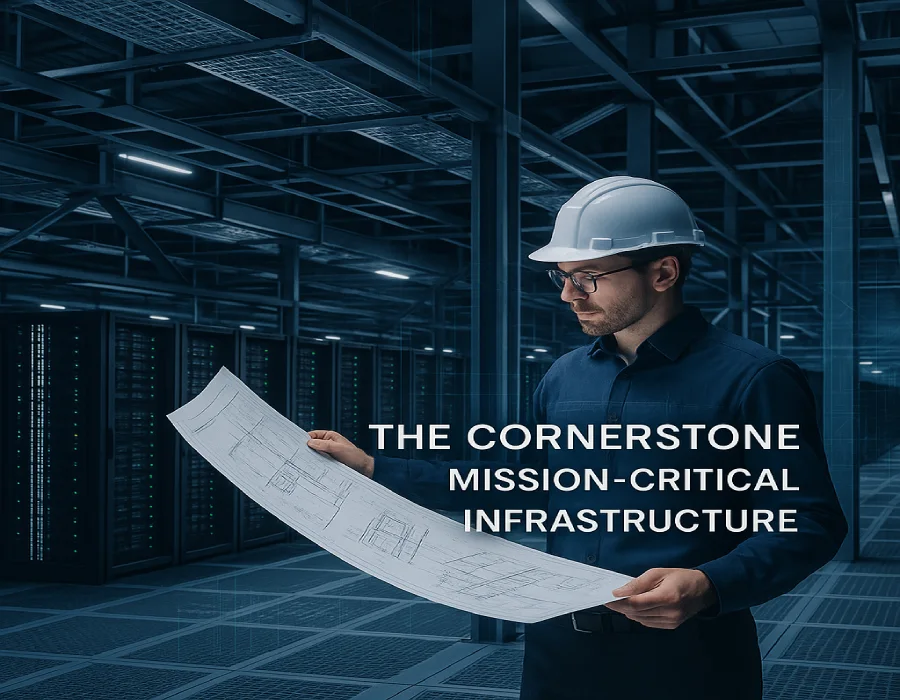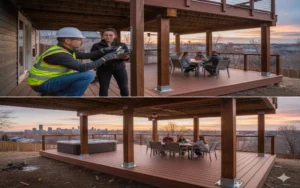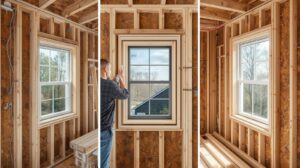In the relentless pursuit of scalability and speed within the digital age, skid-mounted and modular data centers have emerged as the definitive solution for modern IT deployment. These prefabricated data center structural design marvels offer unparalleled agility. However, their true efficacy hinges on a fundamental, non-negotiable element that operates behind the scenes: absolute structural integrity. For a mission-critical facility, the margin for error is zero. A single structural point of failure can cascade into catastrophic downtime, data loss, and financial damage. This is where the specialized, indispensable expertise of a skid data center structural engineer becomes the most critical investment you can make.
Your Expert Skid Data Center Structural Engineer in Denver
At ISTA Engineers, based in the heart of Denver, Colorado, we are more than just consultants; we are the dedicated data center infrastructure engineer partners who safeguard your multi-million dollar investments. Our profound understanding of modular data center structural engineering ensures that your infrastructure is not only rapidly deployable but also resilient, compliant, and engineered to withstand the toughest demands, from the rigors of transportation to the seismic realities of our region.
What Does a Data Center Structural Engineer Do? Defining the Critical Role
A data center structural engineer is the guardian of your facility’s physical resilience. Their purview extends far beyond simple compliance with building codes. They are responsible for the entire structural ecosystem, ensuring that every component—from the structural steel of the skid frame to the concrete slab it rests upon—functions as a unified, robust system. Their core mandate encompasses:
- Structural Analysis for Data Centers: Utilizing advanced computational methods, including Finite Element Analysis (FEA), to model and simulate how the structure will behave under a multitude of stress factors, from heavy static loads to dynamic seismic events.
- Load Calculations: Meticulously calculating all dead loads (the permanent weight of the structure, servers, UPS systems, cooling units) and live loads (maintenance personnel, moving equipment) to prevent deformation or failure.
- Resilience and Risk Mitigation: Designing for environmental challenges specific to the site, including seismic bracing for earthquakes, high wind loads, and even vibration analysis from internal or external sources.
- MEP Integration: A crucial aspect of structural engineering for mission-critical facilities is seamless collaboration with Mechanical, Electrical, and Plumbing (MEP) teams. The structural design must proactively accommodate pathways, supports, and mounting points for all MEP systems without ever compromising the core structural integrity.
Core Structural Engineering Considerations for Skid-Mounted Data Centers

The paradigm shift towards modular data center structural engineering introduces a unique set of challenges that demand a holistic and expert approach. A skid data center structural engineer must address these key areas:
1. Structural Requirements for Skid-Mounted Data Centers and Load Capacity Analysis
Skid-mounted data centers concentrate an immense amount of weight into a surprisingly small footprint. This density is their strength but also their primary engineering challenge. The first and most critical task is performing a thorough load capacity analysis for data center skids. This involves:
- Precise calculation of equipment weights.
- Modeling weight distribution to avoid point loads.
- Ensuring the skid’s frame and load-bearing walls can support the entire assembly under both static conditions and dynamic forces encountered during transport or seismic activity.
2. Foundation Design for Prefabricated Data Centers: The Bedrock of Stability
The most robust and expertly designed skid is doomed to fail if the foundation beneath it is inadequate. Foundation design for prefabricated data centers is a specialized discipline in itself. It requires:
- A thorough review of geotechnical reports to understand soil bearing capacity and conditions.
- Designing a foundation system—often a reinforced concrete slab—that prevents settling and distributes the skid’s concentrated loads without cracking or failing.
- Engineering proper anchorage systems to securely tie the skid to the foundation, resisting uplift from winds or seismic shifting.
3. Seismic Design for Modular Data Centers: A Non-Negotiable Necessity
For facilities in Denver and across any seismic zone, seismic design for modular data centers cannot be an afterthought. It is a fundamental requirement that involves much more than just meeting the minimums of the International Building Code (IBC) and ASCE 7 standards. It requires:
- Designing robust seismic bracing for the entire structure.
- Ensuring all non-structural components—every server rack, UPS battery, and cooling unit—are individually anchored and restrained to prevent them from becoming dangerous projectiles during an earthquake.
- Engineering for operational continuity, ensuring the facility can maintain uptime even after a seismic event.
4. Transportation, Lifting, and Vibration Analysis
A unique aspect of prefabricated data center structural design is that the structure must be engineered for a journey, not just a final destination. The structural steel frame must be designed to withstand the dynamic stresses of cross-country transportation and the forces of crane lifting without warping, bending, or suffering damage. Furthermore, vibration analysis is critical to protect sensitive server hardware from both external sources (e.g., nearby traffic) and internal sources (e.g., HVAC systems), ensuring performance is not degraded.
Navigating Standards, Codes, and Overcoming Design Challenges

Structural engineering for mission-critical facilities demands rigorous adherence to a complex web of industry standards and building codes. This includes designing to meet specific Uptime Institute Tiers certifications, which have direct and stringent implications for structural redundancy and resilience.
The path to a successful deployment is paved with potential technical hurdles. ISTA Engineers specializes in identifying and overcoming these frequent challenges in data center structural design, which include:
- MEP Integration Complexity: Coordinating the structural support for heavy and intricate MEP systems within a tight, pre-fabricated space requires foresight and constant collaboration.
- Site-Specific Adaptations: No two sites are identical. We excel at adapting standardized skid designs to unique site conditions, such as uneven existing slabs or specific geotechnical challenges.
- Future-Proofing for Scalability: Designing with future expansion or heavier equipment upgrades in mind requires forward-thinking load calculations and flexible layout planning.
- Balancing Cost and Performance: Selecting the right materials and design approaches to achieve durability and meet all performance criteria without unnecessary expenditure.
The ISTA Engineers Advantage: Your Expert Denver-Based Partner
Hiring a structural engineer for a data center project is one of the most consequential decisions you will make. It directly impacts your project’s timeline, budget, long-term reliability, and ultimate success. As a premier Denver-based firm, ISTA Engineers offers a distinct and powerful advantage:
- Local Expertise: We possess in-depth, firsthand knowledge of regional challenges, including Colorado’s seismic activity, Front Range soil conditions, and local Denver building codes. This local insight prevents costly delays and ensures swift permit approval. Most of the data centers are located in states other than Colorado and we are licensed in lots of states and can provide design in almost all states. Delete this part or modify it.
- Specialized Focus: We are not generalists. We are specialists who speak the language of IT and facilities managers. Our entire focus is on the precise structural requirements for skid-mounted data centers and other mission-critical facilities.
- Integrated Design Philosophy: We believe in collaboration from day one. By working closely with architectural and MEP teams from the initial concept, we ensure a cohesive, conflict-free design that facilitates a smooth MEP integration process and accelerates overall deployment speed.
Frequently Asked Questions (FAQ)
What does a data center structural engineer do?
A data center structural engineer is responsible for ensuring the physical structure that houses the IT equipment—whether a traditional building, a skid, or a modular container—is safe, stable, and resilient. They perform load calculations, design foundations and anchorage systems, and ensure the structure can withstand environmental forces like earthquakes and wind, thus protecting the mission-critical operations within.
What is a skid-mounted data center?
A skid-mounted data center is a pre-assembled data center module built onto a steel frame or “skid.” These self-contained units include all necessary IT, power, and cooling infrastructure and are engineered for easier transportation and rapid deployment speed compared to traditional brick-and-mortar construction.
Why is structural integrity important for a data center?
Structural integrity is the absolute foundation of uptime and safety. It prevents catastrophic failure of the facility, protects millions of dollars in sensitive equipment from damage due to shifting or collapse, and ensures the continuous operation of mission-critical applications for businesses and their clients. It is the bedrock upon which reliability is built.
How do you calculate structural load for data center equipment?
Load calculations involve using Finite Element Analysis (FEA) software and established engineering principles to create a model of the skid and its contents. Engineers account for the weight of all components (servers, UPS, CRAC units, etc.), dynamic loads from movement and transportation, and potential seismic forces to ensure the design does not exceed the strength of the materials (like structural steel) or the supporting concrete slab.
What are the seismic requirements for data centers?
Seismic requirements are outlined in international standards like ASCE 7 and the IBC (International Building Code). These codes dictate the level of seismic force a structure must be designed to withstand based on its geographic location. For data centers, which often require continued operation after an event, requirements frequently exceed minimum code standards, involving specialized seismic bracing and restraint systems for both the structure and every piece of equipment inside.
Ready to Build on a Foundation of Confidence?
The complexities of prefabricated data center structural design demand a specialized partner who views your project’s resilience as their primary mission. ISTA Engineers provides Denver and the national market with the expert structural analysis for data centers required to mitigate risk, ensure compliance, and guarantee operational continuity.
Contact ISTA Engineers today to schedule a consultation with our expert team and ensure your data center is built on a foundation of unwavering strength and expertise.
Explore Our Expertise in Data Center Structural Engineering:





One Response